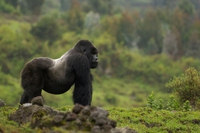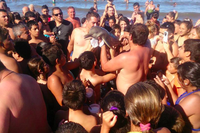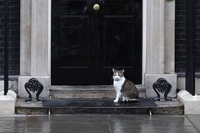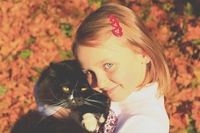
No fin whale will be killed in Iceland in 2016
L’Islanda ha annunciato che quest’anno non aprirà la caccia alle balenottere. La scelta è di carattere economico, l’esportazione di carne di balena è infatti sempre più difficoltosa.
L’Islanda ha annunciato che quest’anno non aprirà la caccia alle balenottere. La scelta è di carattere economico, l’esportazione di carne di balena è infatti sempre più difficoltosa.
British TV presenter and naturalist Chris Packham recently unveiled a series of wildlife photographs aimed at raising environmental awareness amongst the young. The shots, which are being exhibited in London, were taken in England and Scotland and portray the impact of litter on local wildlife. They were specially commissioned by supermarket chain Lidl UK as part of a
Sembra che cantare sia per i gorilla un modo di esprimere soddisfazione per il loro pasto. Questa scoperta potrebbe aiutare a far luce sull’evoluzione del linguaggio nei primi esseri umani.
Polychlorinated biphenyls, commonly known as PCBs, are a group of highly toxic man-made chemicals introduced in the early twentieth century and quickly acclaimed as an industrial breakthrough. Like the pesticide DDT and herbicide Agent Orange, which were also once thought to be safe, PCBs have a dark side. They don’t break down easily and can
In Argentina un piccolo delfino è stato tirato fuori dall’acqua da un gruppo di turisti desideroso di scattarsi una foto con l’animale. Il cetaceo è poi morto per disidratazione.
The past two years have been grim for pet owners in the southern part of the UK capital of London. A killer nicknamed the Cat Ripper of Croydon, the most targeted neighbourhood, has been roaming the streets at night in search for feline prey, and residents and the police have now joined forces to catch
Italian plant neurobiologist Stefano Mancuso has been working tirelessly to teach the world that plants are intelligent creatures that are able to communicate with each other in order to find nutrients, propagate their species and defend themselves against predators. Naturalist Charles Darwin introduced this notion in the late 1800s, although it was not taken seriously
A population of cats of any race and colour lives or better rules the mile-long Aoshima Island, in the Ehime prefecture, Southern Japan. In 1945, a small colony of cats was introduced to oppose the presence of mice that were plaguing fishermen’s boats. At that time, 900 people inhabited the island. Today, proportions have changed. Felines increased
On the Internet there are many clichés on cats and children living together. Here are 5 deep-rooted prejudices.
L’animale, ripreso in Arizona dopo anni di ricerche, è minacciato dalla costruzione di una miniera di rame che distruggerebbe il suo territorio.








